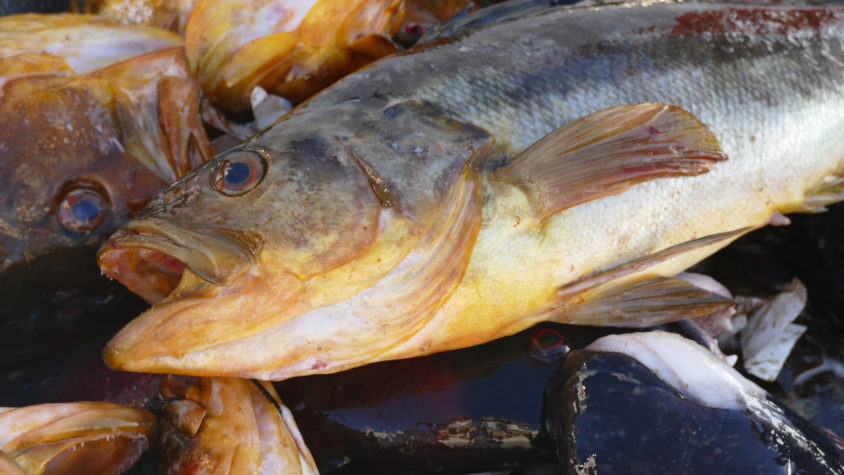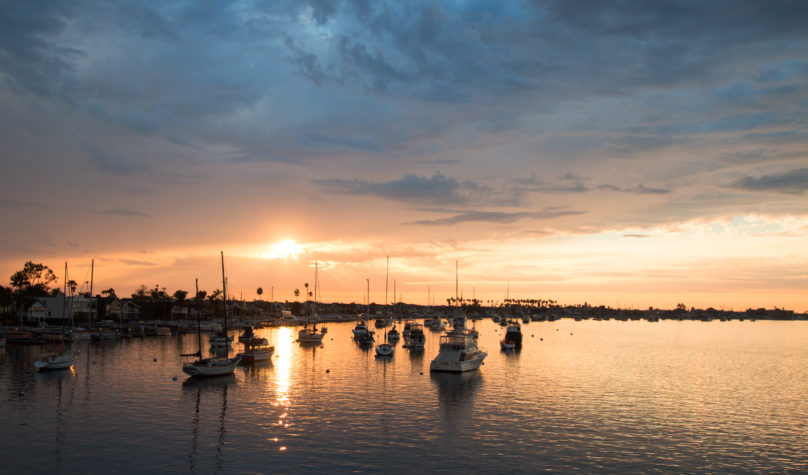Top Fishing Trips
Calico Bass Fishing in the Kelp Forests of San Diego, California
Tuna fishing has long been a staple of the southern California fishing industry and a boon to the state’s economy. Similarly, spectacularly large fish have fueled avid sport anglers on the hunt for their next trophy for the past several decades. However, with overfishing resulting in increasingly rare bluefin sightings and sparse pockets of yellowfin hauls, it’s worth considering a lesser-known but plentiful San Diego fish – the calico bass.
Calico Bass Are a Great Alternative to Tuna Fishing
With a mild taste great for eating by itself or in more elaborate dishes, such as the ever-present California fish taco, the calico bass – also known as the kelp bass – is sought after for good reason. With habitats ranging from Baja, California, and Mexico up the Pacific coast to Washington, the calico is widespread, but perhaps the richest populations can be found off the San Diego coast. Certainly, this fish is found in much greater numbers near San Diego than the often-sought bluefin tuna, and provides a much more satisfying sport fishing experience.
In addition, it’s a fun fish to hunt, drawing anglers to San Diego kelp beds to find that perfect spot. The pure strategy involved with finding that potential never-fail lure, locating a kelp forest hotspot rich with feeding calicos, and targeting them with exactly the right technique is the very definition of sport. Once the right combination is found, the satisfaction of reeling in fish after fish is something even the most productive tuna excursions fail to replicate.
 Should Anglers Be Concerned About Calico Numbers
Overfishing, the very reason California bluefin are elusive these days, is not a concern with calico bass. In fact, despite charter fishing guides reporting entire boats of anglers catching their limit, the species is still plentiful. Calico bass have a designated conservation status of near-threatened, only recently moving from the least concern designation and allowing anglers to fish the San Diego waters to their heart’s content – or at least as long as the limit allows.
Much of this boon in population can be attributed to the fact that commercial calico bass fishing has been illegal since the 1950s. Efforts have been made to keep the population sizeable in both numbers and weight, with California placing a minimum of 14 inches on all kelp bass. As such, more of these slow-growing fish are reaching mature sizes of nearly 30 inches.
Calico Bass Are a Year-Round Fish
Calico bass can be fished year-round, though the warmer months are ideal. May to October has resulted in the best catch in years past, though April and November are sometimes included in the so-called peak season. However, calicos can be a great fish to target during the winter months when tuna populations in California are near nonexistent.
Looking to make the most of your Southern California fishing and spend the most time possible actually reeling in fish? Consider a trip that focuses on calico bass. If your focus is on putting the sport back into sport fishing, let an expert show you the ins and outs of hunting for these wonderfully tricky fish.
Should Anglers Be Concerned About Calico Numbers
Overfishing, the very reason California bluefin are elusive these days, is not a concern with calico bass. In fact, despite charter fishing guides reporting entire boats of anglers catching their limit, the species is still plentiful. Calico bass have a designated conservation status of near-threatened, only recently moving from the least concern designation and allowing anglers to fish the San Diego waters to their heart’s content – or at least as long as the limit allows.
Much of this boon in population can be attributed to the fact that commercial calico bass fishing has been illegal since the 1950s. Efforts have been made to keep the population sizeable in both numbers and weight, with California placing a minimum of 14 inches on all kelp bass. As such, more of these slow-growing fish are reaching mature sizes of nearly 30 inches.
Calico Bass Are a Year-Round Fish
Calico bass can be fished year-round, though the warmer months are ideal. May to October has resulted in the best catch in years past, though April and November are sometimes included in the so-called peak season. However, calicos can be a great fish to target during the winter months when tuna populations in California are near nonexistent.
Looking to make the most of your Southern California fishing and spend the most time possible actually reeling in fish? Consider a trip that focuses on calico bass. If your focus is on putting the sport back into sport fishing, let an expert show you the ins and outs of hunting for these wonderfully tricky fish.
 Find a San Diego Fishing Guide That Features Calico Bass
Searching for a quality fishing guide for your next fishing trip to California? Contact our list of top charters to make certain your San Diego calico bass trip is one to remember.
Find a San Diego Fishing Guide That Features Calico Bass
Searching for a quality fishing guide for your next fishing trip to California? Contact our list of top charters to make certain your San Diego calico bass trip is one to remember.
 Should Anglers Be Concerned About Calico Numbers
Overfishing, the very reason California bluefin are elusive these days, is not a concern with calico bass. In fact, despite charter fishing guides reporting entire boats of anglers catching their limit, the species is still plentiful. Calico bass have a designated conservation status of near-threatened, only recently moving from the least concern designation and allowing anglers to fish the San Diego waters to their heart’s content – or at least as long as the limit allows.
Much of this boon in population can be attributed to the fact that commercial calico bass fishing has been illegal since the 1950s. Efforts have been made to keep the population sizeable in both numbers and weight, with California placing a minimum of 14 inches on all kelp bass. As such, more of these slow-growing fish are reaching mature sizes of nearly 30 inches.
Calico Bass Are a Year-Round Fish
Calico bass can be fished year-round, though the warmer months are ideal. May to October has resulted in the best catch in years past, though April and November are sometimes included in the so-called peak season. However, calicos can be a great fish to target during the winter months when tuna populations in California are near nonexistent.
Looking to make the most of your Southern California fishing and spend the most time possible actually reeling in fish? Consider a trip that focuses on calico bass. If your focus is on putting the sport back into sport fishing, let an expert show you the ins and outs of hunting for these wonderfully tricky fish.
Should Anglers Be Concerned About Calico Numbers
Overfishing, the very reason California bluefin are elusive these days, is not a concern with calico bass. In fact, despite charter fishing guides reporting entire boats of anglers catching their limit, the species is still plentiful. Calico bass have a designated conservation status of near-threatened, only recently moving from the least concern designation and allowing anglers to fish the San Diego waters to their heart’s content – or at least as long as the limit allows.
Much of this boon in population can be attributed to the fact that commercial calico bass fishing has been illegal since the 1950s. Efforts have been made to keep the population sizeable in both numbers and weight, with California placing a minimum of 14 inches on all kelp bass. As such, more of these slow-growing fish are reaching mature sizes of nearly 30 inches.
Calico Bass Are a Year-Round Fish
Calico bass can be fished year-round, though the warmer months are ideal. May to October has resulted in the best catch in years past, though April and November are sometimes included in the so-called peak season. However, calicos can be a great fish to target during the winter months when tuna populations in California are near nonexistent.
Looking to make the most of your Southern California fishing and spend the most time possible actually reeling in fish? Consider a trip that focuses on calico bass. If your focus is on putting the sport back into sport fishing, let an expert show you the ins and outs of hunting for these wonderfully tricky fish.
 Find a San Diego Fishing Guide That Features Calico Bass
Searching for a quality fishing guide for your next fishing trip to California? Contact our list of top charters to make certain your San Diego calico bass trip is one to remember.
Find a San Diego Fishing Guide That Features Calico Bass
Searching for a quality fishing guide for your next fishing trip to California? Contact our list of top charters to make certain your San Diego calico bass trip is one to remember.